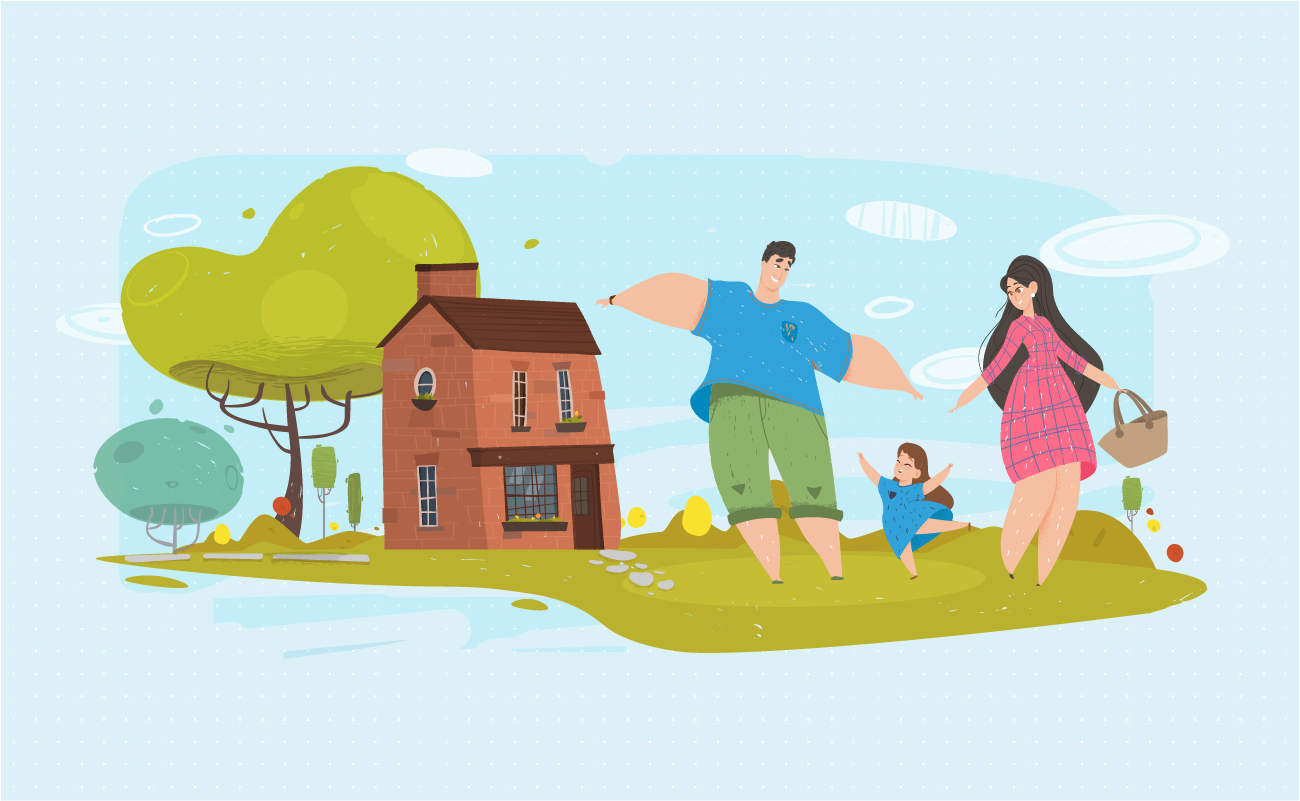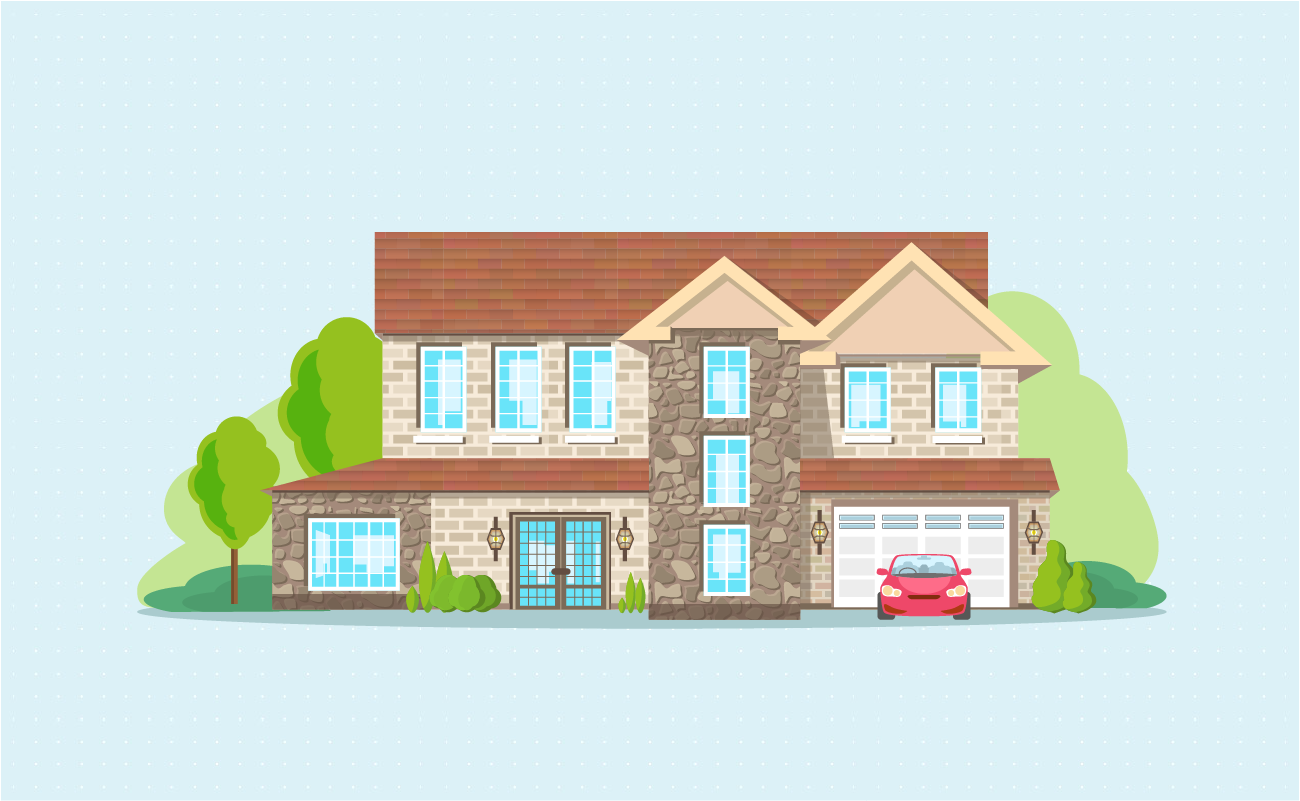Fixed Rates
30 yr
25 yr
20 yr
15 yr
10 yr
Compare Terms
Compare Rates
Real APR
Adjustable Rates
Qualification
Affordability
Renter Affordability
Rent vs Buy
Price per Square Foot
Jumbo
Home Sellers
 USDA Mortgage Calculator
USDA Mortgage CalculatorThis calculator helps buyers estimate their monthly USDA home loan payments.
Guide published by Jose Abuyuan on September 17, 2020

Getting your finances in order is a must before buying a house. You need to have good credit and save enough down payment to secure the deal. At the same time, you must find a home in a good location that won’t break your budget. And with home prices increasing in major cities, other people choose to live in the suburbs or rural areas.
This is where the USDA loan program can help. As long as you choose a home in a USDA-approved location, you can qualify for this type of loan. It’s an affordable mortgage option with lenient credit standards that are not as strict as conventional loans.
To learn more about USDA loans and its benefits, read our guide below. We’ll discuss its difference from conventional mortgages as well as its pros and cons. You’ll learn about qualifications for USDA loan approval, especially the required income limits. Knowing this information will help you determine if a USDA mortgage is right for you.
USDA loans are mortgages backed by the U.S. Department of Agriculture which caters to low and moderate-income homebuyers. It’s normally used as a loan purchase tool by people looking for homes in rural areas. The USDA guarantee provides insurance for lenders, allowing them to offer no down payment. It also comes with low interest rates. USDA loans usually come in 30-year fixed-rate loans and 15-year fixed-rate loans. They also provide refinancing programs that aid borrowers who are keen on securing more favorable mortgage terms.
When people hear about the USDA, it’s usually associated with farming and food safety. But they also run projects that uphold rural development in relatively low population areas. The USDA guaranteed loan program aims to help families gain homeownership while fostering strong communities. They assists first-time homebuyers and other borrowers who do not qualify for conventional mortgages.
USDA rural development programs began on May 1, 1935, after President Franklin D. Roosevelt signed an executive order that formed the Resettlement Administration. During the Great Depression, it helped struggling families in urban areas relocate to communities planned by the federal government. Over the decades, Congress kept expanding this project. By October 13, 1994, USDA home loans were organized under the Federal Crop Insurance Reform Act and the Department of Agriculture Reorganization Act. Today, the program continues to help people afford homes and improve rural communities.
The COVID-19 crisis tightened mortgage approvals throughout the country, with close to a third of Americans unable to meet housing payments. But while the mortgage industry struggles, the USDA loan program persists. According to Time.com, June 2020 recorded the highest monthly volume for USDA loans since 2013. Overall, loan production increased more than 53% compared to the same period in the previous year.
People who put homebuying on hold due to COVID-19 may consider USDA loans to get back on track. If you have limited income and a low credit score in the post-pandemic market, you may be eligible for a USDA loan program.
Borrowers must choose property located in eligible USDA rural areas. These places include towns, villages, and open countries that are not part of large cities and metropolitan centers. The USDA prefers areas with populations lower than 20,000 people. Though in some cases, a population of 35,000 may be approved. Urbanized areas are places with 50,000 people or more.
The prospect of moving to a rural area may seem unappealing to homebuyers. But many locations are qualified for USDA financing. Across the United States, around 97 percent of land mass is qualified for rural development. If you’re willing to move away from a busy city, you’re likely to find a good location. Contrary to what people think, many USDA locations are suburban communities. These places are not as isolated as they seem, though you may choose to live in remote locations.
How to verify if your area meets USDA standards? Go to the USDA Income and Property Eligibility site.
Comparing USDA loans with conventional mortgages will help us learn more about its benefits. First, let’s learn about the requirements for USDA loans and how they work.

USDA loans are made for homebuyers with limited income who want to settle down in rural areas. It provides 100 percent financing, which means borrowers are not required to make a down payment. USDA loans also offer relaxed credit requirements compared to conventional loans, making it easier to qualify for mortgages. Since these are federally-backed loans, they usually have lower rates than conventional loans. If you’re looking to move away from the city, consider this option.
To be eligible for a USDA loan, your credit score must be at least 640. If you meet this requirement, you’ll receive streamlined processing of your application. However, if your credit score is lower than 640, you must submit to more rigorous underwriting standards even if your application is approved. Your lender will review your credit background more thoroughly, which might take more time.

Before applying for a loan, make sure to review your credit report. You can order a free copy of your credit report at annualcreditreport.com. Check it for incorrect information such as unrecorded payments or a wrong billing address. Disputing errors to your credit bureau can help increase your credit score.
Next, you must meet approved income limits. The USDA sets income limits at no more than 115 percent of the median household income in an area. This limit depends on where you live and the size of your family. Household income is estimated by combining the borrower’s income and every adult’s income in a home. This rule is followed regardless of the occupant’s family name.
If you have assets that exceed USDA income limits, in some cases, you might be required to make a down payment. However, if you have a high income and good credit score (well above 640), it’s better to get a conventional loan instead. Again, the USDA prioritizes families with low to moderate incomes.

Check the income limit in your region by accessing the USDA income limits page. As of May 2020, the standard income limit for one to four-member households in U.S. counties is $90,300. Meanwhile, income limits for five to eight-member households is set at $119,200.
Borrowers must satisfy the required debt-to-income ratio (DTI). DTI is a percentage that measures your total monthly debt payments with your total monthly income. Maintaining a low DTI ratio helps you secure loan approval. Take note of the two main types of DTI ratios:
DTI requirements for USDA loans are actually similar to conventional mortgages. This indicator helps lenders assess if you are a low-risk borrower. A lower DTI ratio means lower risk of defaulting on your loan, which increases your chances for loan approval. However, in some cases, a USDA lender may approve a higher DTI ratio if your credit score is higher than 680.
How much can you borrow? It will depend on the amount you can qualify for. This is based on financial factors such as your salary, debts, and your credit history. USDA loans do not enforce loan limits. On the other hand, other government-backed mortgages such as FHA loans impose specific loan limits per area.
For instance, if your loan is $300,000, the upfront guarantee fee will be $3,000. As for your annual guarantee fee, if your principal balance is reduced to $280,000, it will be $980 ($81.67 per month). This means that as your principal balance decreases, your annual guarantee fee also decreases. However, take note that the annual guarantee fee is required for the entire life of the loan. Unlike conventional mortgages, mortgage insurance is only required for a limited period of time.
USDA mortgage insurance rates are lower compared to other government-backed mortgages, such as FHA loans (1.75 percent for upfront fee). The reduced insurance rates were implemented on October 1, 2016 by the USDA Rural Development. Prior to the new rates, the USDA upfront guarantee fee was 2.75 percent, while the annual guarantee fee was 0.50 percent.
Just like conventional loans, USDA borrowers must submit to credit checks before the loan is approved. Be prepared to show proof that you have a stable source of income for the last 24 months. You must disclose your gross monthly income, information about your assets, and your total monthly debts. USDA lenders require an acceptable credit history, which means none of your accounts should be converted to collections in the past 12 months. However, if you can prove your credit was impacted by temporary circumstances outside of your control, such as a medical emergency, you can still qualify for a USDA loan.
To prepare your application, make sure to obtain the following documents:
USDA mortgages also include the following costs:

Need to find a USDA lender in your area? Go to the U.S. Department of Agriculture Rural Development site. To verify if you’ve connected with an authorized creditor, check their list of USDA-approved lenders.
Aside from the USDA guaranteed loan, there are two other types of USDA financing offered to borrowers. Applicants may obtain the following mortgage options:
These are loans specially designed for low and very low-income borrowers who need assistance in buying affordable homes. It also prioritizes elderly and disabled applicants going through financial challenges. To be eligible, your income must fall under the local limit prescribed by the USDA. Income requirements vary per region, with some below $17,000. The interest rate can also be as low as 1 percent.
As the name suggests, this type of loan directly finances borrowers. The USDA serves as your primary lender, eliminating the need for a bank or mortgage company. USDA Direct loans are available for single-family housing and multi-family homes.
These loans are geared towards financially underprivileged borrowers who need help in renovating their home. If you qualify for a USDA Home Repair Loan, you can improve your old house and eliminate safety hazards. It comes with a 1 percent fixed rate with a loan term of up to 20 years. These loans also come as grants to qualified borrowers. If you have a home improvement loan and a grant, you can combine them to receive up to $27,500 of financial assistance.

USDA loans are only valid for primary residences, which means you must live in the house. They cannot be used to purchase investment property or vacation houses.

Conventional mortgages are not directly funded by the federal government. These loans are often bundled into mortgage-backed securities guaranteed by Fannie Mae and Freddie Mac. Borrowers can get conventional mortgages from banks, credit unions, and mortgage companies.
Without direct government funding, conventional lenders face greater risk. For this reason, they impose stringent qualifying standards compared to USDA loans. To qualify, your credit score must be at least 680. But if you want to secure lower interest rates, you must have a credit score of 700 and above. Likewise, if you have a lower credit standing, conventional lenders will give you a higher rate.
The required front-end DTI for conventional loans should not exceed 29 percent. Meanwhile, your back-end DTI should not go over 43 percent. However, most conventional lenders prefer a back-end DTI no higher than 36 percent. This DTI requirement is lower compared to USDA mortgages.
The average down payment for conventional loans is 10 percent. However, borrowers are obliged to make a 20 percent down payment to avoid private mortgage insurance.
Conventional loans are a good fit for homebuyers with high incomes, good credit scores, and a stable source of funds. And unlike USDA loans, conventional mortgages are not limited to certain locations. However, for people with low credit rating and limited income, it’s worth considering USDA loan especially if you intend to live away from the city.
To help you compare USDA loans and conventional mortgages, we created the following table:
| Requirements | USDA Loans | Conventional Mortgages |
|---|---|---|
| Location | Should be a USDA rural area | No area restrictions |
| Income limit | Household income should not exceed 115% of the median income in an area | No required income limits |
| Credit score | Should be at least 640 | 700 and above is the ideal score 680 is usually approved by lenders |
| Down payment | Does not require down payment | 20% – removes PMI 10% – the average down payment 3% – minimum required for 97-3 loan |
| Rates | Has lower rates due to federal funding | A high credit score qualifies you for a lower rate A low credit score gets you a higher rate A low down payment also decreases your rate |
| Front-end DTI | Should not exceed 29% | Should not exceed 28% |
| Back-end DTI | Should not exceed 41% | Ideally should not exceed 36% Should not be higher than 43% If you have a student loan, up to 50% |
| Cost | 1% upfront guarantee fee 0.35% annual guarantee fee No prepayment penalty | PMI is 0.5%-1% of the loan amount per year PMI is canceled once mortgage balance reaches 78% Average closing cost is typically 2%-5% of the loan May come with prepayment penalty |
Getting a mortgage with no down payment and loose credit requirements sound like a good deal. If you don’t have a pristine credit history, this can definitely work to your advantage. You can still obtain low rates even if your credit score is 640. However, despite the benefits, take note of the drawbacks.
First, consider the location. This might not be feasible if your job requires you to commute to the city daily. Think about the time, cost, and energy that will take. If you’re not happy about living outside the city, you should find another option. Next, if your family exceeds the median income in your area, you might not be eligible for a USDA loan. Moreover, it requires borrowers to pay an annual insurance guarantee fee, which must be paid for the entire loan.
USDA loans also adhere to minimum health and safety standards. This means that if you’re planning to buy a fixer-upper, strict appraisers might not approve your home. Lastly, USDA loans can only be used for primary residences. They do not approve financing for investment property or vacation homes.
The following table summarizes the pros and cons of choosing a USDA loan:
| Pros | Cons |
|---|---|
| Get 100% financing, requires no down payment | Only applies to USDA areas |
| Lenient qualifying standards | Income limits may keep you from qualifying |
| Low fixed interest rates | The guarantee fee cannot be canceled |
| No cash reserves required | Has strict home appraisal requirements Old homes may be harder to approve |
| You can finance repairs and closing costs into a loan | May only be used for primary homes |

Many borrowers take USDA loans as 30-year fixed-rate mortgages. The extended payment term allows them to borrow a larger loan amount with a lower monthly payment compared to shorter terms. But how exactly does a zero down payment affect your finances? Will it help you save in the long run?
To find out, let’s use the calculator above to compute an example. Suppose you took 30-year fixed-rate loan worth $200,000 at 3 percent APR. Let’s compare your mortgage payments and total interest if you make a zero down payment, 10 percent down, and 20 percent down.
| Loan Details | Zero Down Payment | 10 Percent Down Payment | 20 Percent Down Payment |
|---|---|---|---|
| Upfront guarantee fee | $2,000 | $1,800 | $1,600 |
| Amount borrowed | $200,000 | $180,000 | $160,000 |
| Monthly principal and Interest payment | $843.21 | $758.89 | $674.57 |
| Monthly taxes, insurance and PMI payment | $341.66 | $335.83 | $330 |
| Total monthly mortgage payment | $1,184.87 | $1,094.72 | $1,004.56 |
| Total interest paid | $103,554.90 | $93,199.41 | $82,843.92 |
The calculations above do not finance the upfront loan guarantee fees.
Based on the table, making a down payment reduces the amount you borrowed. This directly decreases your upfront guarantee fee, which is 1 percent of your loan amount. Without making a down payment, your upfront guarantee fee will be $2,000. Meanwhile, a 10 percent down reduces your upfront fee to $1,800, and a 20 down will decrease it to $1,600.
The results also show you make the highest total monthly mortgage payment ($1,184.87) if you make no down payment at all. If you pay 10 percent down, this decreases your total monthly payment to $1,094.72. That’s savings worth $90.15 per month. On the other hand, if you make 20 percent down, your total monthly payment will be reduced to $1,004.56. This saves you $180.31 per month.
Furthermore, savings are most apparent if we compare the total interest charges. With a zero down payment, your total interest cost for the 30-year loan will be $103,554.90. However, if you pay 10 percent down, you’ll only pay $93,199.41, which means you’ll save $10,355.49 on interest costs. And if you pay 20 percent down, your total interest charges decrease to $82,843.92. This means you’ll save $20,710.98 compared to not making any down payment at all.
Our example shows that while down payment is not required, paying it will help lower your monthly mortgage payments. It also significantly slashes your total interest costs. While it’s tempting not to make a down payment at all, you ultimately save more even if you pay less than 20 percent. That said, it’s worth saving for down payment before you secure a USDA loan.
If you’re looking for affordable financing to live outside the city, you can take advantage of USDA loans. These loans do not require down payment and come with lower credit score qualifications than conventional mortgages.
However, USDA loans also come with disadvantages. First, your home must be in a USDA-approved area. If you’re not keen on living far from the city, this might not work for you. Moreover, it imposes income limits. You might not qualify if your combined household income is way higher than the median income in your county. Next, since government-backed loans follow safety standards, it can be difficult to approve older houses. The USDA also requires annual guarantee fees for the entire duration of the loan.
On the other hand, if you have enough funds and a good credit score, it might be better to take a conventional loan. You save more money on mortgage insurance because PMI is canceled once your mortgage balance is 78 percent. Think about this first before deciding on a USDA loan.
Researching about other types of government-backed mortgages? Read our FHA loan guide on our FHA mortgage calculator.